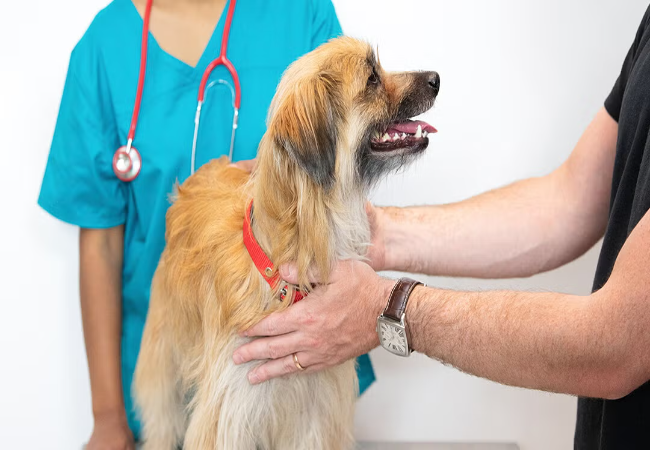Vet-Approved Guide: Signs of Cancer in Dogs & When to See a Vet 2025 🐶🐾

In this article
Vet-Approved Guide: Signs of Cancer in Dogs & When to See a Vet 2025 🐶🐾
By Dr. Duncan Houston BVSc
Cancer is one of the most common health challenges in dogs, especially seniors, affecting around 1 in 3 dogs over their lifetime. Early detection offers the best chance for successful treatment and improved quality of life. Here are key signs every pet parent should know—and when to seek veterinary care. 🛡️
🔍 Why Early Detection Matters
Since cancer symptoms in dogs often appear subtle initially, routine observation and early vet consults are critical. Detecting changes early can significantly enhance treatment outcomes and provide more options.
📋 12 Common Signs of Cancer in Dogs
- Unexplained Weight Loss: Sudden loss of body weight may signal internal cancers like lymphoma or liver tumors.
- Appetite Changes: Increased or decreased appetite, especially with weight changes.
- Digestive Upset: Persistent vomiting or diarrhea could indicate GI tumors.
- Lethargy: Unusual tiredness may suggest high-energy tumor growth or blood cell changes.
- Enlarged Lymph Nodes: Swollen nodes can indicate lymphoma or the spread of other cancers.
- Skin Lumps: New or changing lumps—particularly fast-growing or irregular ones—should be evaluated.
- Pain or Swelling: Limping or reluctance to move may indicate bone tumors like osteosarcoma.
- Breathing Issues or Coughing: Persistent respiratory signs may point to lung or mediastinal tumors.
- Unusual Odors: Bad breath or body odors could signal oral cancers or anal sac tumors.
- Bleeding: Nosebleeds, gum bleeding, or internal bleeding can be caused by tumors affecting blood vessels.
- Poor Wound Healing: Tumors like mast cell tumors may delay normal healing.
- Urinary Changes: Straining to urinate, bloody urine, or frequent accidents suggest bladder or kidney cancers.
🚨 When to Contact Your Vet
If your dog shows any of the above signs—especially weight loss, lumps, or persistent symptoms—schedule a veterinary examination promptly. Early diagnostics such as blood tests, imaging, or biopsies can lead to early-stage treatment. Additional warning signs like swelling, bleeding, or difficulty breathing also warrant immediate veterinary attention.
🧬 Breed & Age Risk Factors
Cancer risk increases with age and varies by breed.
Large breeds often face bone cancers, while smaller breeds may develop skin or mammary tumors. Early spaying/neutering and regular screening help reduce some cancer risks.
🛠️ Taking Action for Your Dog
- ✔️ Perform monthly wellness checks—feel for lumps, check gum color, and weight.
- ✔️ Schedule annual health exams and talk to your vet about cancer screening options.
- ✔️ Track any changes in behavior, appetite, or energy level to report promptly.
📱 Tools to Support Your Pet’s Health
- Ask A Vet: Access 24/7 veterinary advice for concerns. 🩺
🎯 Final Thoughts
Cancer can be a daunting diagnosis, but early detection transforms possibilities. By staying vigilant, maintaining regular veterinary visits, and acting quickly on warning signs, you give your dog the best possible care and hope for longer, happier years together. 🐾
For tailored advice and support, download the Ask A Vet app today. 📲🐶






